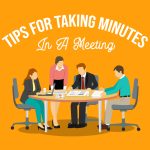Why is it down to managers to solve problems?
After all staff are taken on to do specific jobs within their remit, which might include coming up with new ideas. The manager is the one who finds solutions and implements them. It is defined within the performance criteria of their role. The need is to find solutions. If traditional methods have not worked, what can you do next?

Do all problems have a solution?
Many leading psychologists maintain that if a problem exists, there must be a solution. It’s the natural way of the Universe. Edison said, “I have not failed 700 times. I’ve succeeded in proving 700 ways how not to build a light-bulb.”
However, using an advanced visualisation technique called Quantum Jumping (QJ) one could access the information for the solution more efficiently. QJ supposes that everything exists at once, in multiple dimensions therefore the solution must exist somewhere in one of a thousand different dimensions or “Universes”.
Who came up with that crazy idea?
Mystics throughout history have informed us that time does not exist and that everything happens at once. If this is true, we must be resident in, and have access to, any number of realities where we are in different existences at the same time. There must be one dimension where the relevant answer is already present.
Taking this perspective, Burt Goldman, and elderly gentleman well-practised in hypno-therapeutic techniques, uses powerful visualisation to help quicken the outcome of any dream or desire by finding the solution in another dimension or realm.
Imagine that you wanted to be a concert pianist, you could access the dimension where that part of you exists. You could “download” the steps that the other ‘you’ took to achieve the status of concert pianist and integrate them into this life.
Have you noticed that when you tell the mind you are ready for something, the avenue opens up to you.
How does this work in day to day work situations?
The business world demands that we are productive, efficient and performance-orientated. QJ means slowing our thoughts, meditating and mindfulness, expecting to be led to what we are seeking. Research at Harvard University proved that mindfulness can change brain activity and documented reductions in stress and increased productivity.
Learning the various techniques of QJ you can ‘jump’ to a ‘doppelganger’ of yourself who applies the answers to the problems you’re trying to solve. The key is trusting yourself to find the answers.
Can I learn this stuff?
The ideal solution for a problem is a new perspective! There are links on YouTube to QJ which will enable you to practise the techniques and see how they can suit you. Visual personalities will find it easier. Who knows which one of ‘you’ has just the answer you’ve been looking for?


